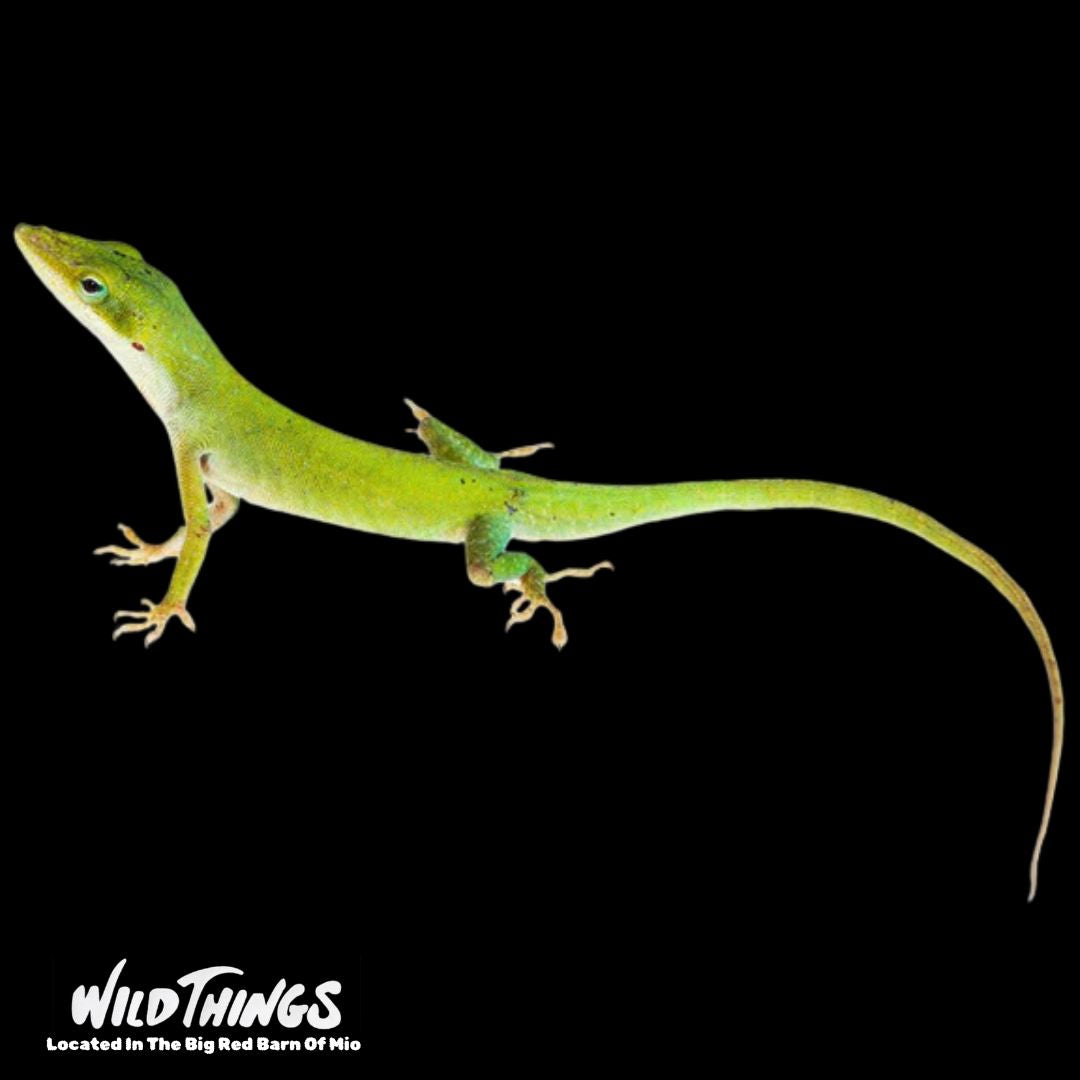AuSable River Outdoors
Giant Green Anole
Giant Green Anole
Couldn't load pickup availability
Species: Giant Green Anole
Scientific Name: Anolis carolinensis
Origin: Tennessee, Texas, Florida, Georgia, Louisiana and the Carolinas.
Lifespan: About 4 years
Size: The typical size of a male green anole is about eight inches, and a female green anole is slightly smaller at around five to six inches in length.
Enclosure Type: Green anoles are known for squeezing through small spaces, so you are going to need to make sure you have a tight-fitting cover for your enclosure.
Enclosure Size: In terms of tank size, a ten-gallon vertical tank can comfortably house one or two green anoles. However, if you have the space for a larger enclosure that’s even better.
Substrate: Something that will stay damp after misting but won’t get too wet. Peat moss and soil work well as does orchid bark. Never use an oily substrate such as pine shavings.
Décor: Your green anole is going to need lots of places to hide, and they love to hide in vegetation. Planting things, like ivy, orchids, bromeliads or snake plants, will provide natural hiding spots and increased aesthetics.
Water: Your green anole is not going to need any fancy or complicated watering device. It will get all the water it needs by drinking water droplets that form after you’ve misted the enclosure. Because they can easily drown, putting any type of water bowl in your anole’s enclosure is highly discouraged.
Temperature: The ambient temperature for your anole’s environment needs to be between 75 and 80-degrees Fahrenheit. The basking area you create should be between 85 and 90-degrees Fahrenheit. It’s perfectly safe to let the nighttime temperature drop to 65-75 degrees Fahrenheit.
Humidity: Keeping the humidity level in your reptile tank at 60 to 70 percent is one of the most important parts of proper green anole care. All you really need to do is mist the enclosure once or twice a day to achieve this. The key is to keep the enclosure damp, not wet. Increasing the number of plants in the environment can really help with maintaining the right humidity level.
Lighting: The best lighting setup for anoles balances essential UVB exposure with appropriate heat and a naturalistic photoperiod. A 5.0 UVB bulb is crucial for Vitamin D3 synthesis and calcium absorption, preventing metabolic bone disease. Supplement this with a basking bulb (wattage depending on enclosure size, aiming for a basking spot of 80°F) to provide warmth. A blue day bulb can be used with the basking bulb. Remember to replicate a natural day/night cycle using a timer, generally 12-14 hours of light during summer and 10 hours during winter.
Type Of Diet: Insectivore
Types Of Food: Crickets, mealworms, waxworms and farm-raised maggots. Never give your green anole super worms or kingworms. These worms have sharp mandibles that can hurt these reptiles.
Feeding Schedule: Young green anoles should be fed daily, while adults can be fed every other day
Supplements: In addition to a varied diet, green anoles require calcium and vitamin D3 supplements. Calcium is particularly vital for growing green anoles and pregnant females. It helps to build stronger bones and teeth. A lack of calcium in the diet can lead to metabolic bone disease, which can be fatal.
Share

